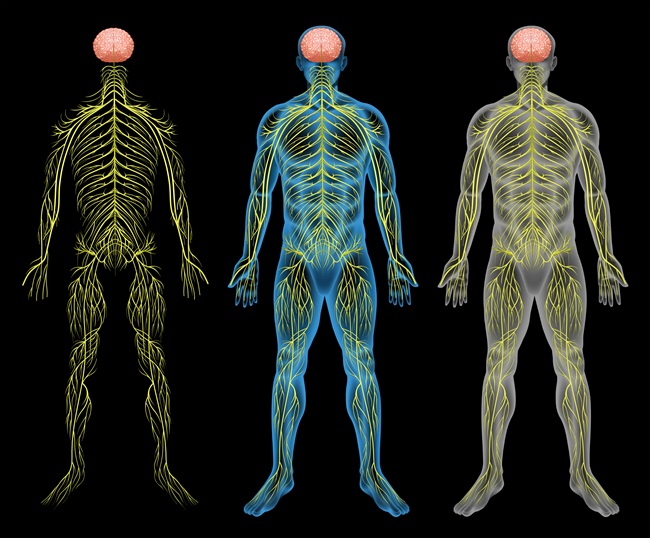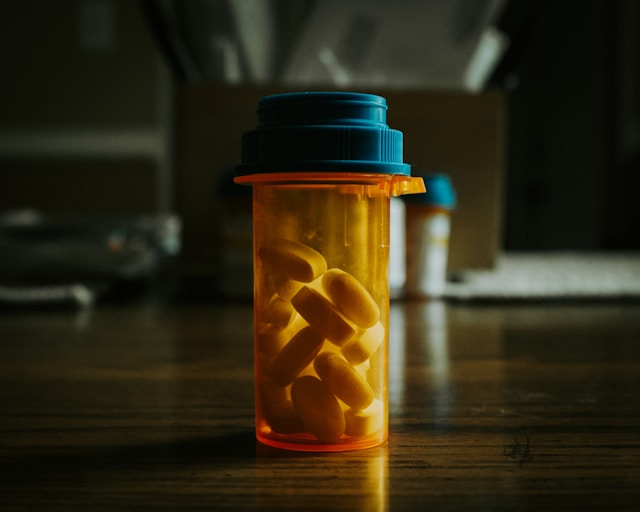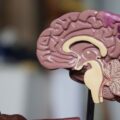The labels for fluoroquinolone antibiotics, Cipro, Levaquin, Avelox, etc. have two black box warnings, warnings reserved for only the most serious and severe adverse effects of drugs:
Fluoroquinolones are associated with an increased risk of tendinitis and tendon rupture in all ages. This risk is further increased in older patients usually over 60 years of age, in patients taking corticosteroid drugs, and in patients with kidney, heart or lung transplants.
Fluoroquinolones may exacerbate muscle weakness with myasthenia gravis. Avoid fluoroquinolones in patients with a known history of myasthenia gravis.
It is later noted that death can result from administration of fluoroquinolone antibiotics in people with myasthenia gravis, hence the warning that these drugs should be avoided in that population.
Central and Peripheral Nervous System Damage
In addition to the black box warnings, there is a 212 word warning of the adverse effects of these drugs on the central nervous system including, “dizziness, confusion, tremors, hallucinations, depression, and, rarely, psychotic reactions have progressed to suicidal ideations/thoughts and self-injurious behavior such as attempted or completed suicide” and seizures.
On August 15, 2013, the FDA announced that they were changing the warning labels for fluoroquinolones to more adequately describe the risk of permanent peripheral neuropathy. The new warning labels will now note that peripheral neuropathy symptoms including “pain, burning, tingling, numbness, weakness, or a change in sensation to light touch, pain or temperature, or the sense of body position” can be caused by fluoroquinolones. They also note that peripheral neuropathy “can occur at any time during treatment with fluoroquinolones and can last for months to years after the drug is stopped or be permanent.”
Label Changes Based on Patient Reports
Also noted in the August 15th announcement was that the FDA was adding the warning of permanent peripheral neuropathy based on patient reports to their Adverse Event Reporting System (AERS) database. They note that, “the recent AERS review evaluated cases of fluoroquinolone-associated peripheral neuropathy with an outcome of ‘disability,’ reported between January 1, 2003 and August 1, 2012. The review showed a continued association between fluoroquinolones use and disabling peripheral neuropathy.”
Cipro was patented in 1983. It took 30 years of people reporting their peripheral neuropathy to the FDA for them to add an appropriate warning to the label.
Additional Warning – Autonomic Nervous System Damage
Since the FDA is slow on the uptake of vital information that should be listed on the warning labels of drugs, I will let you know that, in addition to the central nervous system and the peripheral nervous system, the autonomic nervous system is also damaged by fluoroquinolone antibiotics. The autonomic nervous system, also known as the involuntary nervous system, is composed of the nerves that control heart rate, digestion, respiratory rate, salivation, perspiration, pupil dilation, urination and sexual arousal. Damage to all of these body parts, controlled by the autonomic nervous system, are associated with fluoroquinolones.
How do I know this? In addition to the patient led research and patient descriptions of autonomic system damage, I know this by personal experience. Every one of those autonomic functions was negatively affected when I had a severe adverse reaction to Cipro that began December of 2011.
Though we don’t yet have scientific proof, as no studies have been published, I have personally heard from hundreds of patients experiencing similar symptoms. Since it took 30 years for the FDA to recognize the peripheral neuropathy, I wouldn’t be too keen to disregard the possibility that the autonomic systems is also affected.
Why hasn’t the FDA investigated autonomic neuropathy potentially associated with the fluoroquinolones? Perhaps because the malfunctions of the autonomic nervous system are very difficult to describe and detect and, though they are common among those who are suffering from Fluoroquinolone Toxicity Syndrome, they may not have risen to the top of the list of complaints in the AERS database. However, seeing as damage to the autonomic nervous system is serious and potentially life-threatening, the FDA should connect the dots and add an additional warning of autonomic nervous system damage to fluoroquinolone labels.
Overall Nerve Damage
Since multiple nervous systems are damaged by fluoroquinolones, it leads me to believe that fluoroquinolones damage nerves generally. Some early theories suggest that the fluoroquinolones induce the axons of nerves to degenerate and damage the myelin sheath protecting the nerves. Though I have several theories as to the damage mechanism for fluoroquinolones, anything conclusive other than reporting on what I experienced and have seen, is beyond my level of expertise. I do know that symptoms of nervous system damage are suffered from by the victims of fluoroquinolones and that they suffer mightily, sometimes permanently.
The possibility of fluoroquinolone toxicity is serious. With 26.9 million prescriptions for fluoroquinolone antibiotics dispensed in 2011 alone and the rate of fluoroquinolone induced peripheral neuropathy suspected at 1 per 6000, the number of potentially injured people is staggering. Worse yet, a 2011 study published in BioMed Central, found that 39% of fluoroquinolone therapy in hospital patients was unnecessary. Who knows what the rate of unnecessary fluoroquinolone use is in the general population.
Fluoroquinolones are dangerous antibiotics that are often used to treat sinus infections, urinary tract infections, upper respiratory infections, prostate infections, etc., infections that could be treated with a safer antibiotics. It is absurd and wrong for people to suffer from chronic and often debilitating nerve damage and other health conditions as a result of a prescription antibiotic, especially when other, safer alternatives can be used.
Information about Fluoroquinolone Toxicity
Information about the author, and adverse reactions to fluoroquinolone antibiotics (Cipro/ciprofloxacin, Levaquin/levofloxacin, Avelox/moxifloxacin and Floxin/ofloxacin) can be found on www.floxiehope.com.
We Need Your Help
More people than ever are reading Hormones Matter, a testament to the need for independent voices in health and medicine. We are not funded and accept limited advertising. Unlike many health sites, we don’t force you to purchase a subscription. We believe health information should be open to all. If you read Hormones Matter, like it, please help support it. Contribute now.
Yes, I would like to support Hormones Matter.
This post was published previously on Hormones Matter in 2013.



















